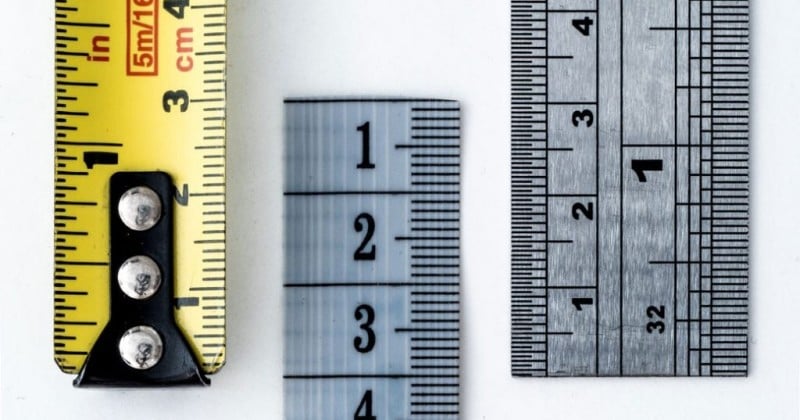Updated: December 18, 2025- 11 min read
Listing your achievements in a resumé for a Product Management position can feel like a thankless task. And yet, it's an inescapable part of your working life. Your resumé or CV is your professional passport and it aims to portray the highlights of your career. It is precisely this last point which can be tricky. Selecting those really important achievements is as hard as picking your favorite song. Just like one kind of music is particularly apt for driving to work in the morning; only certain experiences are good at clarifying where your expertise lies.
Thus, the secret to building a great resumé is knowing what to leave out. (Un)fortunately, Product Management is not really an entry-level job. Sure, there are some junior positions out there that can be reached with a few months’ experience and a prestigious certification. However, most of the time professionals who undertake the transition to product manager aim to build the following story with their resumé: their gradual acquisition of product skills across different positions and functions.
Every resumé must include key personal facts, past relevant work experience, education, skills, and referees’ contact information. But before we start completing these sections to build the perfect resumé for a Product Management position, let’s focus on some (real) mistakes that aspiring PMs often include in their CVs.
Resumé Fails: Where Not to Begin
There is no right background, school or location where you have to begin to make it in product. However, this also means that there are a lot of very eager people attempting the transition who actually have very little knowledge of recruitment processes. Through the years, we've encountered many aspiring PMs who tend to make the same rookie mistakes with their resumés.
Here's a quick summary of these mistakes and why they could be red flags for product team recruiters across the world.
Don't write an autobiography
In theory, a resumé or CV is supposed to tell your professional story. Whether you are hoping to get an Associate Product Management position or moving forward to a Head of Product Management vacancy, you'll have a wealth of experiences to reflect on. Even very young candidates will have plenty to talk about. At college, you probably took part in one or more student clubs on entrepreneurship, IT and similar fields. And you likely had a couple of summer jobs, plus volunteered for a local charity and collaborated on a student-led final year project.
Imagine trying to reflect all of these activities on a piece of paper. Now, picture the struggle of a PM with years (or decades!) worth of experience. The word count is starting to mount up, right? You need to discern what matters and what does not.
Taking up too much space is the most common mistake. Some prospective applicants have shared even 7-page CVs with us! As proud as you might be about your background, you have to specify to triumph.
And how do you justify what to keep and what to drop? Tailoring.

Avoid these common mistakes
Now, as always, mistakes can be turned to your advantage. This is something we'll cover below. But first, let’s review what tailoring your resumé for a Product Manager positions implies. Many PM applicants think that it's enough to change their summary, list of skills and maybe hobbies in line with whatever position and industry they're attempting to enter. While particularly strong candidates or needy recruiters might overlook this limited effort, you're much more likely to get an interview if you put in some work.
This means tailoring your documents to reflect the industry, company, and position that you're applying for. Your resumé for a position at a small startup won't look the same as one for a large multinational. Consider both the language and content you include, and whatever you do, don't make these three common mistakes:
Mistake #1: Misalignment of achievements: Almost every job today is multi-faceted and includes many different functions. A marketer, for example, might be a great copywriter but also very good with numbers. Imagine how many fields Product Managers can claim to be operating in! However, if you go back to the original job offer, there are likely to be certain keywords that reveal the focus of the role. Highlight your successes there, forget about other contributions (as great as they might be!) and focus exclusively on those required by the position.
Mistake #2: Inappropriate language: Everybody knows that tech is different. From the clothes Silicon Valley leaders wear to the casual expressions which many companies use in their marketing. For certain positions, you might be at an advantage if your application materials are in some way original. But, most of the time, a resumé for a product manager position must remain professional. Stay clear of jokes, aphorisms, and exaggerations.
Mistake #3: Boasting: You should not be afraid of putting your Unique Selling Point forward. However, there's a difference between this and claiming that all of a company's achievements are thanks to you. Choose your wins selectively, highlighting only those where you really made a difference.
Write a coherent story
Doing a bit of everything is a common vice for Product Managers, but remember to only include the most relevant and coherent points. Make sure that you're making a point with the experiences you choose to display. For example, if you're applying for a heavily technical position with few outside requirements, spend less time on showing what a proficient public speaker you are.
Again, a resumé for a Product Manager position is like a product: the features you choose to include must reinforce each other.
Don't forget context
This could also be called the “shopping list” style of writing. We've already discussed how many PMs tend to include even that small role they had in their High School newspaper. This makes some CVs resemble random lists. Big mistake.
Every element of your background has to contribute to your story. You need a context for “increased retention by 5%” or “activated 3 new monetization channels”. For instance, you could describe these numbers in relation to how soon you sought to make an impact. Or how much money you saved because you realized that some processes could be done more efficiently. Your methodologies, and how you arrived at a particular conclusion, also merit consideration. Even if you do not include them in your resumé due to space limitations, keep in mind that you will need to highlight these stories in your cover letter and interview.
Another reason why shopping list resumés for Product Management positions don't work is their emphasis on technical terms over functions and achievements. Product Management, like many other disciplines, has its own set of buzzwords to refer to practical approaches: Agile, Jobs-To-Be-Done… While it is likely that your final interviewer will know about these terms; at the resumé stage, listing these as separate points won't add any value. Rather, try to find general terms that even product “outsiders” would be able to understand. Obviously, without losing accuracy or undervaluing your work.

How to Write a Good Resumé for a Product Manager Position
Now that we've reviewed big resumé mistakes, let's explore how to build a killer PM resumé. First tip: keep it brief! Even an industry leader should be able to turn their whole experience into a concise one-pager. Think of it like developing a product or feature under strict limitations. It's a complex exercise, but you are going after one of the most sought-after job positions in the world!
Some common concerns: summaries and competencies. A summary is nothing more than one or two sentences that aim to reflect where you've been and where you're going. The truth is, summaries are not really impactful on tech resumés. Your achievements should speak for themselves. Accomplishments, competencies, and skills must be selected for each application process. Sure, you can have a core list of strengths to display on every resumé. However, if you list too many irrelevant or loosely related points, the recruiter will see you didn't make an effort to tailor and target your application materials.
Should I include volunteering and hobbies? This really depends on the offer. Imagine that you're applying for a Product Manager position at an important sports media company. In this case it would definitely make sense to reference your love of sport. The same goes for listing the languages you speak when applying for jobs in international companies.
Of course, make sure that this section doesn't take too much space: the important bits are your employment history and education after all.
Sites like Venngage offer a selection of professional resumé templates you can use to get inspired. Finally, remember Laszlo Bock’s formula for better resumés. As former Senior Vice President of People Operations at Google, he knows a thing or two about hiring people in tech. Here's his basic equation to explain your accomplishments:
Accomplished [X] as measured by [Y] by doing [Z]
For example, instead of saying that you “increased retention rates” in isolation; you can expand your answer by saying “Accomplished higher retention rates as measured by our subscription numbers by limiting the number of newsletters we sent every week”. Taking this as your basic formulation, you can start building a story around your achievements that tells your future employer about your data management and other skills.

Product Management Resumé Checklist
Now we've seen some of the dos and dont's of resumé writing Let’s review the ten most important Product Management resumé principles:
Most Product Managers transition to the job as relatively experienced professionals.
Be selective with what you include.
Just like products, PM resumés must be tailored for every experience. Change, add or delete sections according to job requirements.
Product Managers are responsible for multiple functions across many industries. Build a coherent story with a strong sense of direction.
Even though tech people are sometimes considered forward and irreverent, make sure that your resumé remains serious and aligned with your current achievements.
Product work is very data-driven and provides very clear metrics. However, make sure to link them to worthwhile examples of your contributions.
While PM skills are highly transferable between industries and positions, ensure that you show why you're a good fit for that particular role.
Avoid “shopping-list” style resumés. You might think that you're impressing recruiters, but it might actually bore or confuse them.
Providing context and avoiding excessively technical terms can help you a lot, especially if recruiters are not Product Management experts.
Concise one-pagers are extremely effective. Use summaries to your advantage.
Relevant hobbies, volunteer work, and skills like languages have a hidden potential when applying to certain product positions.

How to Format a Product Management Resumé
Finally, let's focus on format. As we said above, resumés have to include: key personal facts, past relevant work experience, education, and any other relevant skills. How can you present all this information?
Standard one-pager: This is what everyone should at least aim for. There are thousands of templates online; even your word processor should have a few. Make sure that you pick a “serious” font, like Arial, Times New Roman or Helvetica. Then, space out your text with appropriate spacing, titles, subtitles, columns. Your background and education should occupy two-thirds or more of your total available space. One key word of advice: if you are unable to reach the one-pager, do not despair. Two pages might not be perfect but it is still fine if you make the effort to present only relevant information.
Graphics-heavy resumé: An alternative for adventurous PMs, designing your own template can show that you are a creative and original thinker. After all, you are pursuing positions that will put you in the driver’s seat for a feature or product. The most important consideration behind these resumés is company fit: more established corporations would rather see a traditional one-pager. On the other hand, certain startups and other innovative businesses will actually favor candidates who make an effort and think of original ways to display their resumé.
Personal website: This is the ultimate combo. Why? For starters, you can combine the previous two types, displaying both your achievements in text and as a self-made piece of design. A website is by itself a very useful job-searching tool. Not just because recruiters can find you, but because it can help you build your profile as a mentor or speaker within the product community. What's more, the way you manage the website can exemplify your digital marketing skills and the type of growth methodologies you could apply in a product position.
Alternative approaches: The possibilities are endless. As a Product Manager, you are supposed to be at the pinnacle of the digital economy. Think of apps, songs, videos, games… All of these can provide a window into your professional profile. But as with the graphics-based resumés, you need to carefully consider the company’s preferences.
We hope you've found this advice useful. For more information on resumé writing, check out these top tips from a Resumé, CV, and Cover Letter Writing Expert.
Updated: December 18, 2025





